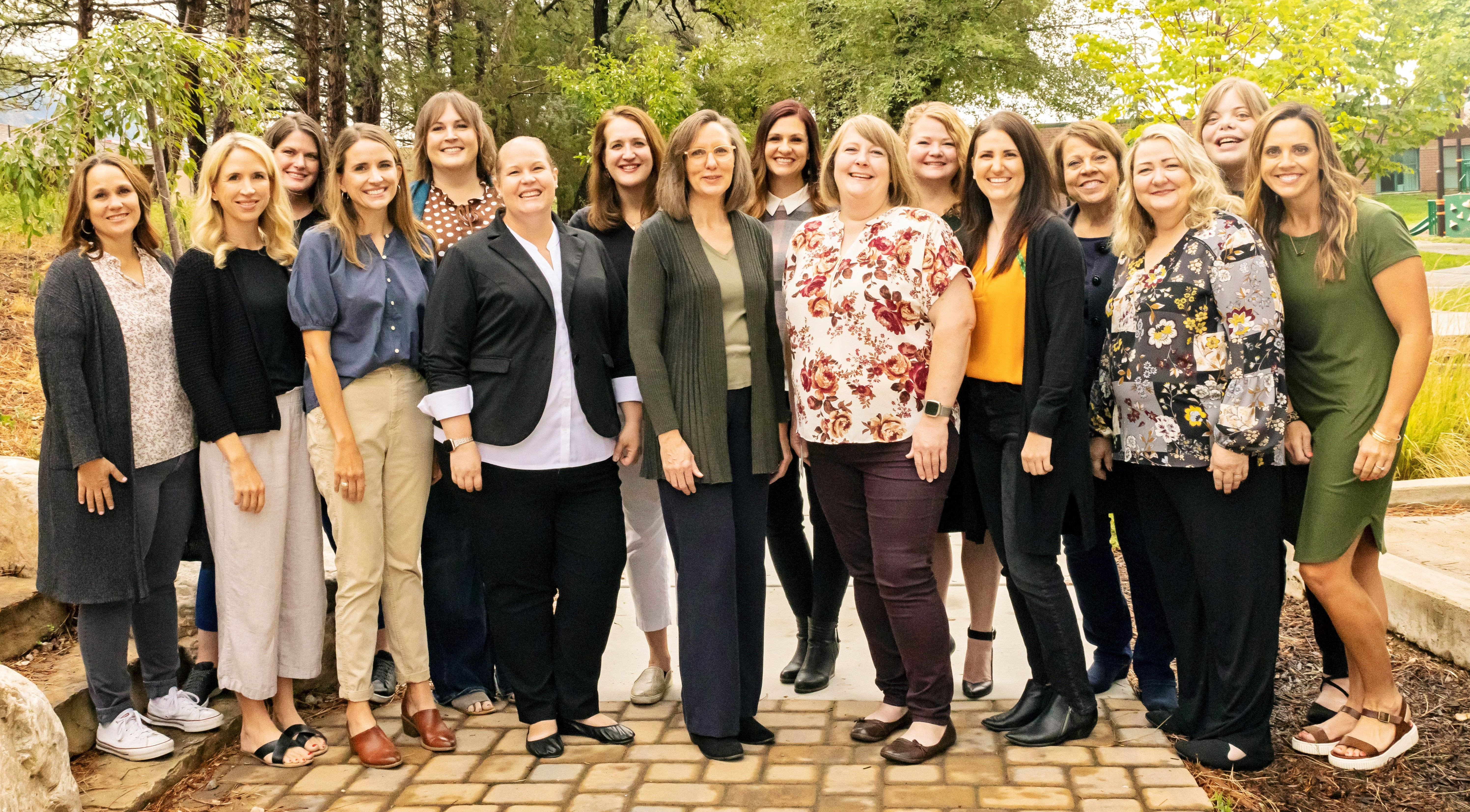Utah Teachers of the Deafblind
NCDB is excited to feature teachers of the deafblind (TDBs) and other teachers with specialized expertise in deafblindness in Utah, the first state in the nation to have certified TDBs.
In these profiles, they share their experiences and raise awareness of the importance of specialized training in deafblindness and certified TDBs. Information in the profiles was current as of each publication date.
For more information about Utah’s deafblind programs, visit
Erin Farrer Cook
Published March 2024
After graduating from high school, Erin Farrer Cook took a job as an intervener and never looked back. She went on to receive a master’s in special education and has a deafblind endorsement, a severe disabilities endorsement, and an administrative license. She also was a deafblind consultant for the Utah Schools for the Deaf and the Blind (USDB) for nearly a decade.
Erin is currently USDB’s director of educational deafblind services, supervising 15 teachers of the deafblind and interveners who work with students with deafblindness across the state.
She is also director of the Utah Deafblind Project. Erin notes that the project’s efforts, which include extensive intervener training, “have helped ensure we are on the cutting edge of effective practice and policy related to deafblindness.” The project also collaborates with other states in efforts to build their capacity to establish and support teachers of the deafblind and interveners.
Erin was excited to be in one of the first cohorts to receive Utah’s teacher of the deafblind credential. “I recognize the efforts that went into the development of the credential,” she says, “and I’m proud that our state recognized this need and worked to develop the specialized training required.”
This summer, several Utah teachers of the deafblind collaborated with Helen Keller National Center to bring a deafblind immersion experience to their state for two students. “It was so exciting," she says, "to see these students, who have significant impact of disability, participate and enjoy the experiences provided.”
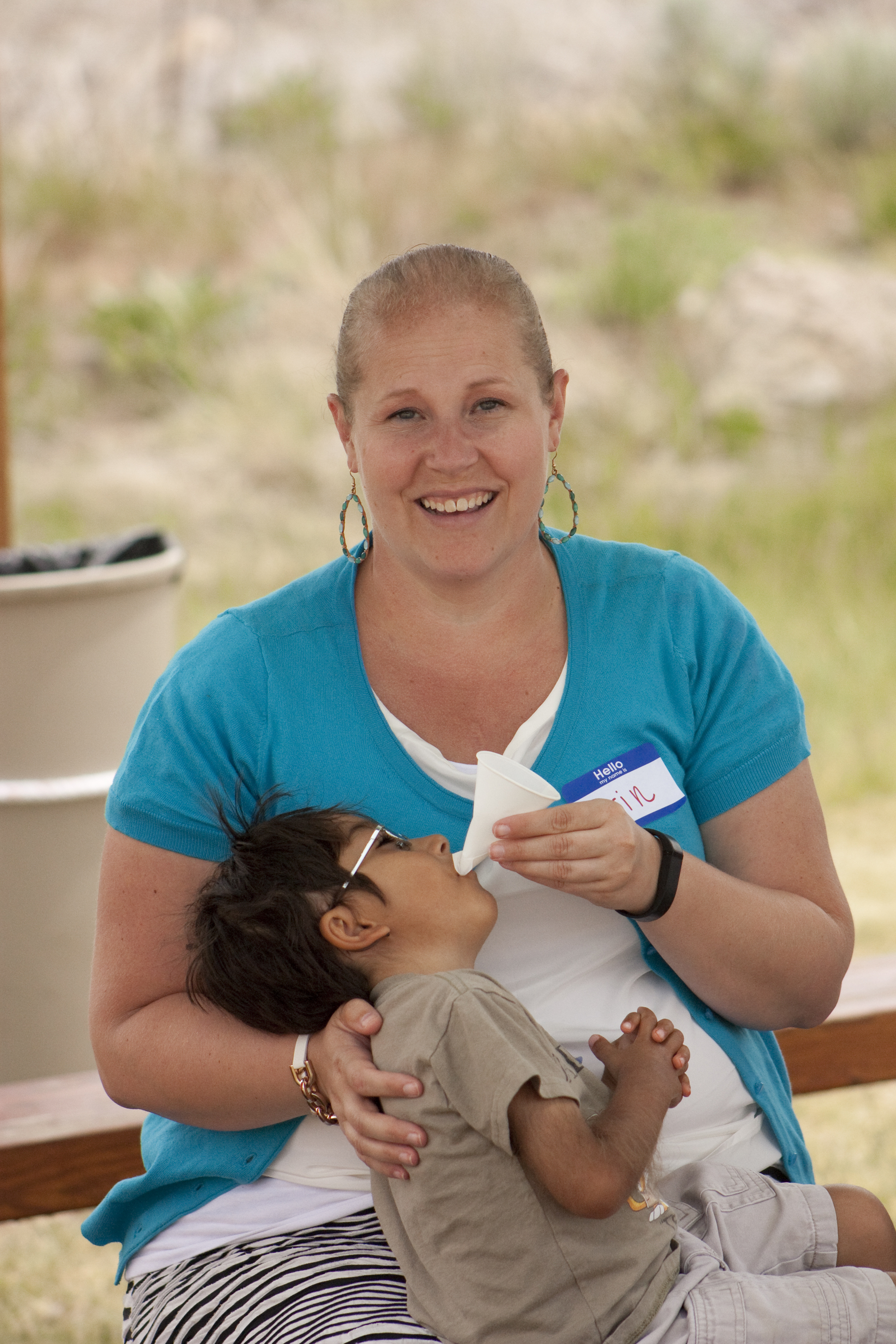
The skills needed to work with each student are not one size fits all. Not only are their needs individualized, but what they offer the world, and me, is remarkable. I love being able to experience each student’s unique contributions and learn from them and their families.
Nicole Holmstead Marcelo
Published March 2024
After teaching third grade for a number of years, Nicole Holmstead Marcelo took a job as an intervener while waiting to begin graduate school. She loved the work so much—especially seeing her student’s progress—that she knew being a teacher of the deafblind was the career she’d been looking for.
Today, Nicole is a lead teacher of the deafblind for Utah Schools for the Deaf and the Blind (USDB). In this position, she trains other teachers of the deafblind and helps coordinate the referrals they receive for deafblind services. In addition to a bachelor’s in elementary education and a master’s in special education, Nicole has endorsements as a teacher of the visually impaired and teacher of the deafblind.
“Deafblindness is such an individualized disability that there is no way that an endorsement alone could prepare someone to work with such a variety of needs,” Nicole explains. “But it does mean that I have a greater depth of knowledge and skill to help not only my students but also their IEP teams and their family to better understand the needs of each individual student.”
“I also feel very passionate about making sure our students all have a way to communicate both receptively and expressly,” she says. “I know there are different ways we can meet this need for all of our students if we are willing to be creative and think outside the box.”
Nicole recently worked with a new student who was deafblind, his intervener, teachers, and classroom aides to put on a deafblind simulation for the student’s peers and teacher in their adapted physical education class. “They had so many questions,” she recalls, “and at the end of the activity, it was so rewarding to hear how the students better understood our student’s needs and how they could better connect with him.”
Nicole also enjoys working with her colleagues on the USDB training team. “It's so exciting to see the passion and commitment that everyone has for working with our students and their desire to further their knowledge and skills to help our students.”
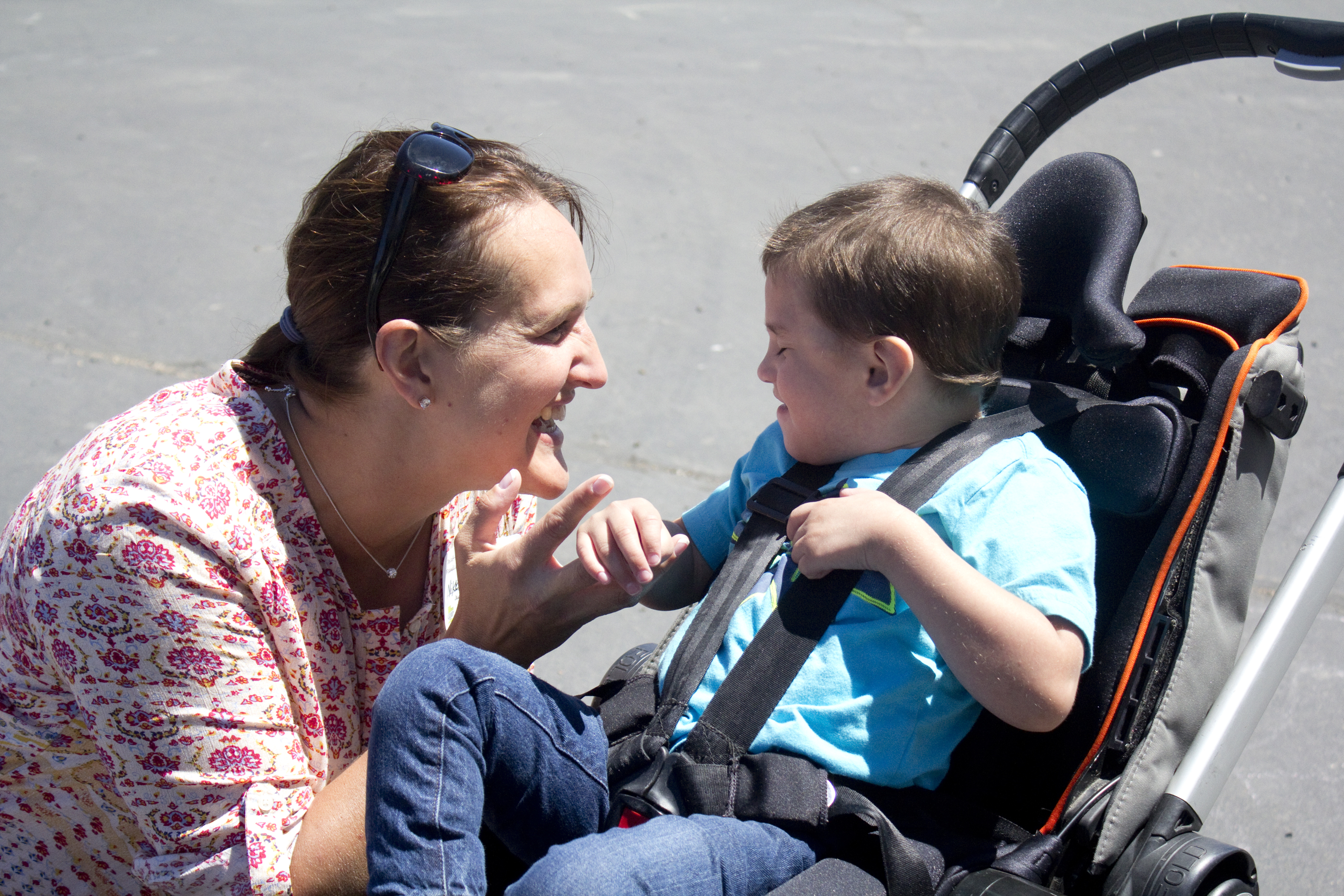
It’s such a blessing to work with our students, families, and IEP teams. Be prepared to have some experiences that will change the way you see the world. Follow the child’s lead and don’t be afraid to try something different and advocate for your child’s success.
Elizabeth Jones
Published November 2023
Elizabeth Jones was introduced to the field of deafblindness during an interdisciplinary course taught by Cathy Nelson at the University of Utah while completing a special education master’s degree in severe disabilities. “Dr. Nelson brought so many stories involving students with deafblindness, and I grew to love the students through her,” she said. After a presentation by a teacher of the deafblind (TDB) in class one day, Elizabeth knew she wanted to work with students who are deafblind.
Elizabeth went on to earn a deafblind endorsement and take a position as a TDB at Utah Schools for the Deaf and the Blind (USDB). She is proud of her specialized training in deafblindness, noting that “the endorsement means I have the knowledge and skills to ensure that I am providing the students that I work with appropriate strategies and tools for them to be successful in accessing their school day and the curriculum.”
“I feel passionately about movement within learning, especially for those with sensory needs, including proprioceptive and sensorimotor needs,” she explains. “I try to apply my knowledge of dance and movement with the students I work with.”
Elizabeth loves the connections she makes with her students. She describes a recent interaction she had that began when a student handed her one of their favorite toys: “I tapped the toy against the desk, and they promptly followed my lead and started tapping the desk with a similar toy. We took turns going back and forth either tapping the toys on the desk or dropping them onto the desk to get different sounds.”
“When the student was done with the game, they took the toy from me and turned away. I confirmed that I understood, by signing ‘all done’ in their visual field, and they signed it back to me. You need to show them that you respect their communication.”
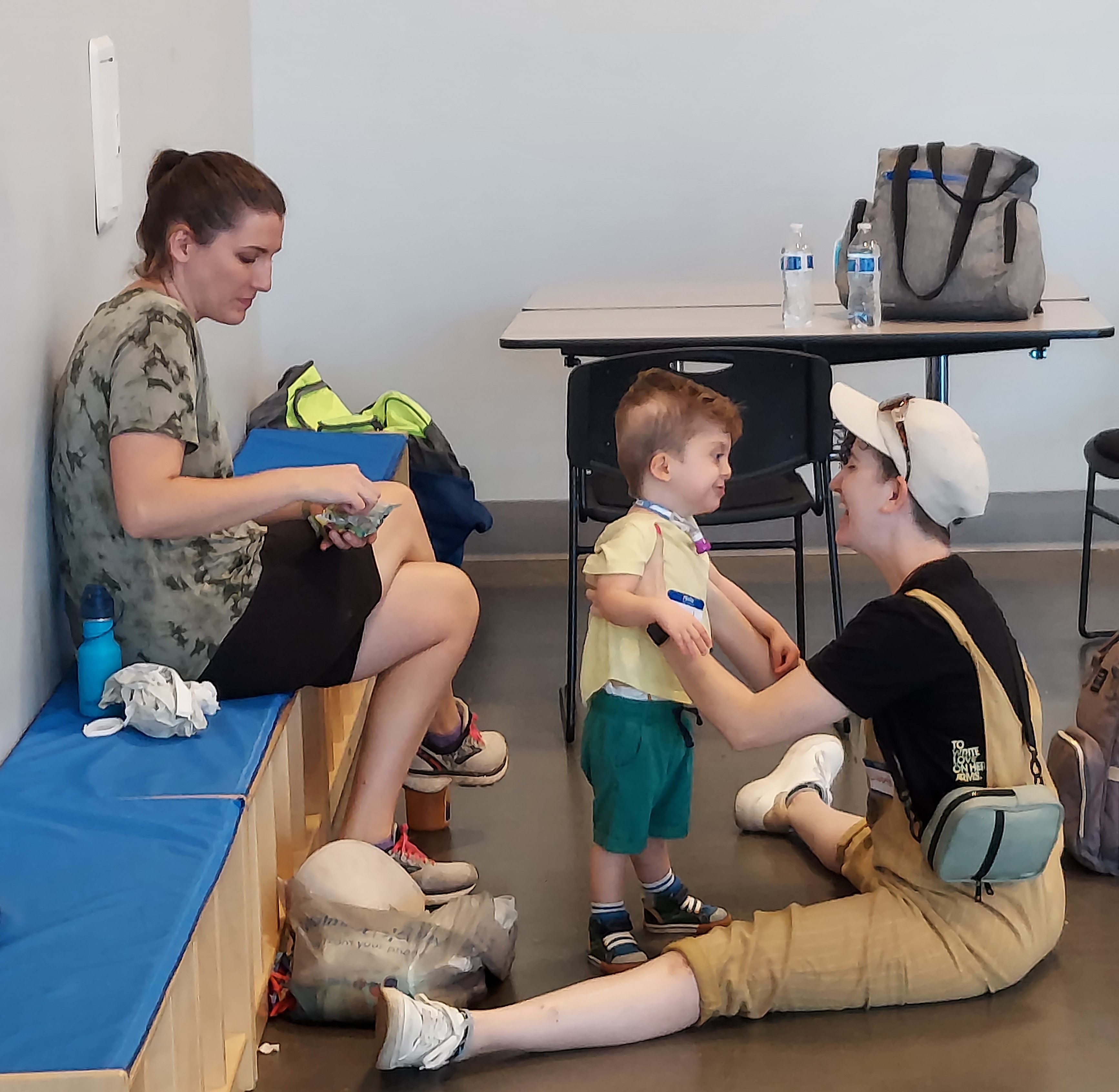
We can’t fully understand what it’s like to be deafblind if we don’t have a multi-sensory loss, but we can imagine putting ourselves in their position and being respectful of their space, timing, need for adjustments to new people and situations, and so on. And we can provide the patience they need to be fully comfortable and feel safe in our classroom.
Emily Murrell
Published November 2023
Emily Murrell became excited about working with children who are deafblind during her Master of Education program at the University of Utah. While taking a course on serving students with severe disabilities, she was particularly interested in how programming for students who are deafblind could be adapted and modified for their unique, individual needs. So interested, in fact, that Emily delayed her graduation a year so she could obtain an endorsement in deafblindness.
Emily believes her own visual impairment and hearing loss have strongly influenced her work today as a teacher of the deafblind for Utah Schools for the Deaf and the Blind. She was born with several birth defects, including cleft lip and palate, tetralogy of fallot, and midline defect. She has high degenerative myopia, which led to a retinal hole and cataracts. She also has hearing loss and now wears cochlear implants. “Having those difficulties in my life has made me more open and empathetic to our students who are deafblind,” she explains.
Emily’s educational philosophy emphasizes the importance of teamwork. “I make sure I am in contact with everyone about what we’re working on and seeing how we can collaborate,” she says.
Emily has put her collaboration efforts to work with a preschool student who is deafblind, medically fragile, and has been at home or in the hospital for most of the school year. The child’s team includes a physical therapist, occupational therapist, speech/language pathologist, teacher of the deaf/hard of hearing, teacher of visual impairments, a personal nurse, and a special education teacher. “Most important,” Emily says, “has been working with her parents, who are so amazing and dedicated to doing what is best for their child.”
“I visit as often as I can and bring materials so she can continue working on her skills, like a position board with different materials she likes. Seeing her use these things and the excitement of the parents makes my day!”
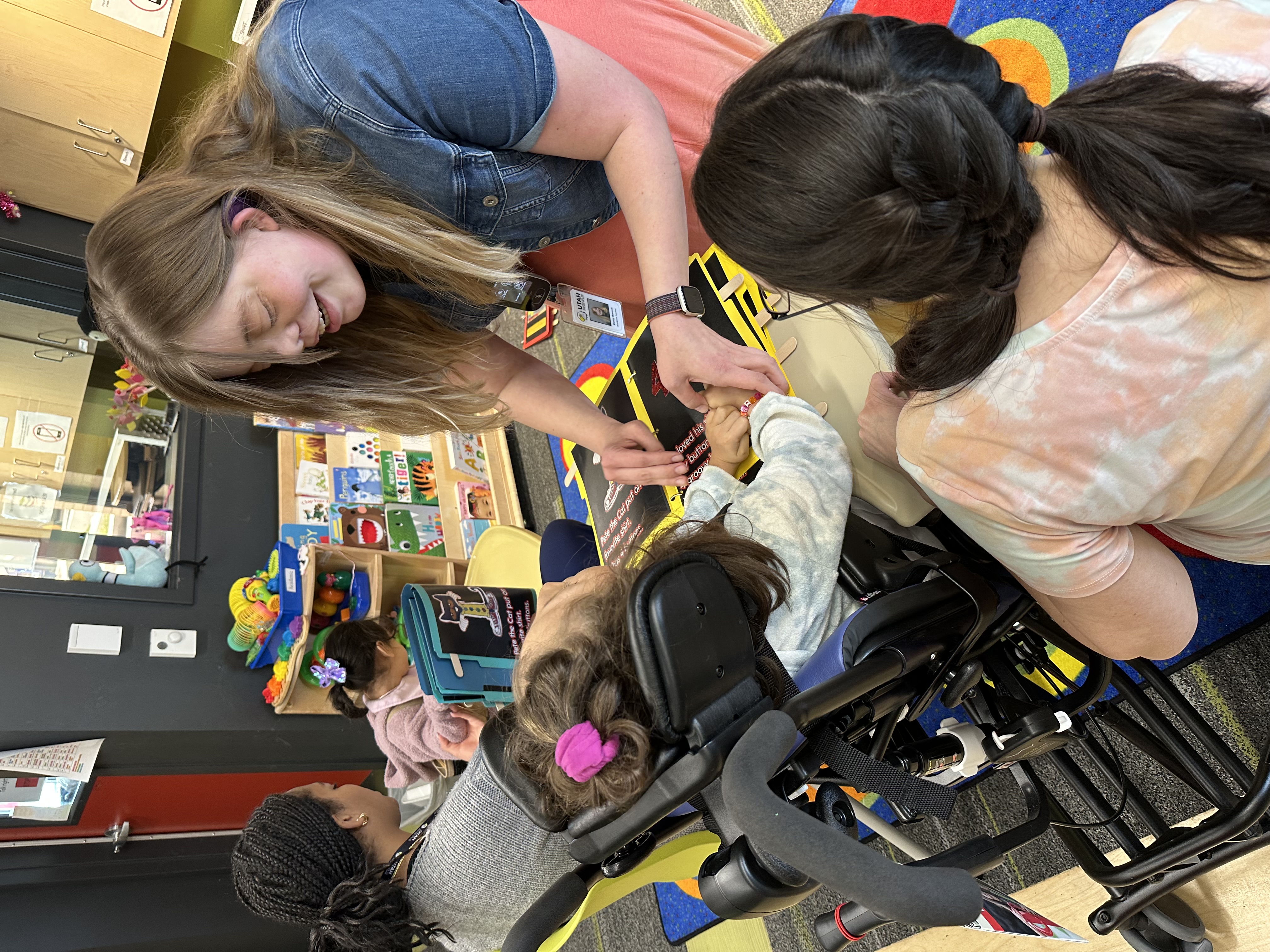
My advice to other teachers working with children/youth who are deafblind is to be patient, be open, and be curious! To get to know anyone, you need to take time to get to know them and understand their point of view. Children/youth who are deafblind are no different!
Rosalee Pearson
Published June 2023
After graduation, Rosalee Pearson was working as a substitute teacher when a student’s intervener left. She applied and got the position, ending up working as the student’s intervener for three and a half years. She loved every minute of it!
Years later, while teaching special education at a school that helped young people transition to adult services, Roselee had an opportunity to apply to be a teacher of the deaf-blind for Utah Schools for the Deaf and the Blind (USDB). She jumped at the chance to once again work with children who are deaf-blind. She is now a teacher of the deaf-blind for USDB, in multiple counties in the state, and serves on their Deafblind Transition Team, CHARGE Syndrome Team, and Deafblind Expanded Core Curriculum Team.
In addition to her intervener training, Rosalee has a master’s in special education, along with endorsements in deaf-blind and severe disabilities. “Getting the deaf-blind endorsement was so important to my work with students who are deaf-blind,” she explains. “It gave me a toolbox for working with a variety of students and their specific needs. I feel that I’m a more effective teacher because of the knowledge I gained.”
Rosalee recalls a day when one of her students taught her an important lesson: One day in class, she started talking with the student’s intervener without first greeting the student with her name sign. “The student started making noise and touching his shoulder where I should have made my name sign,” she says. “This really served as a reminder to me to always greet my students, even when I’m in a hurry.”
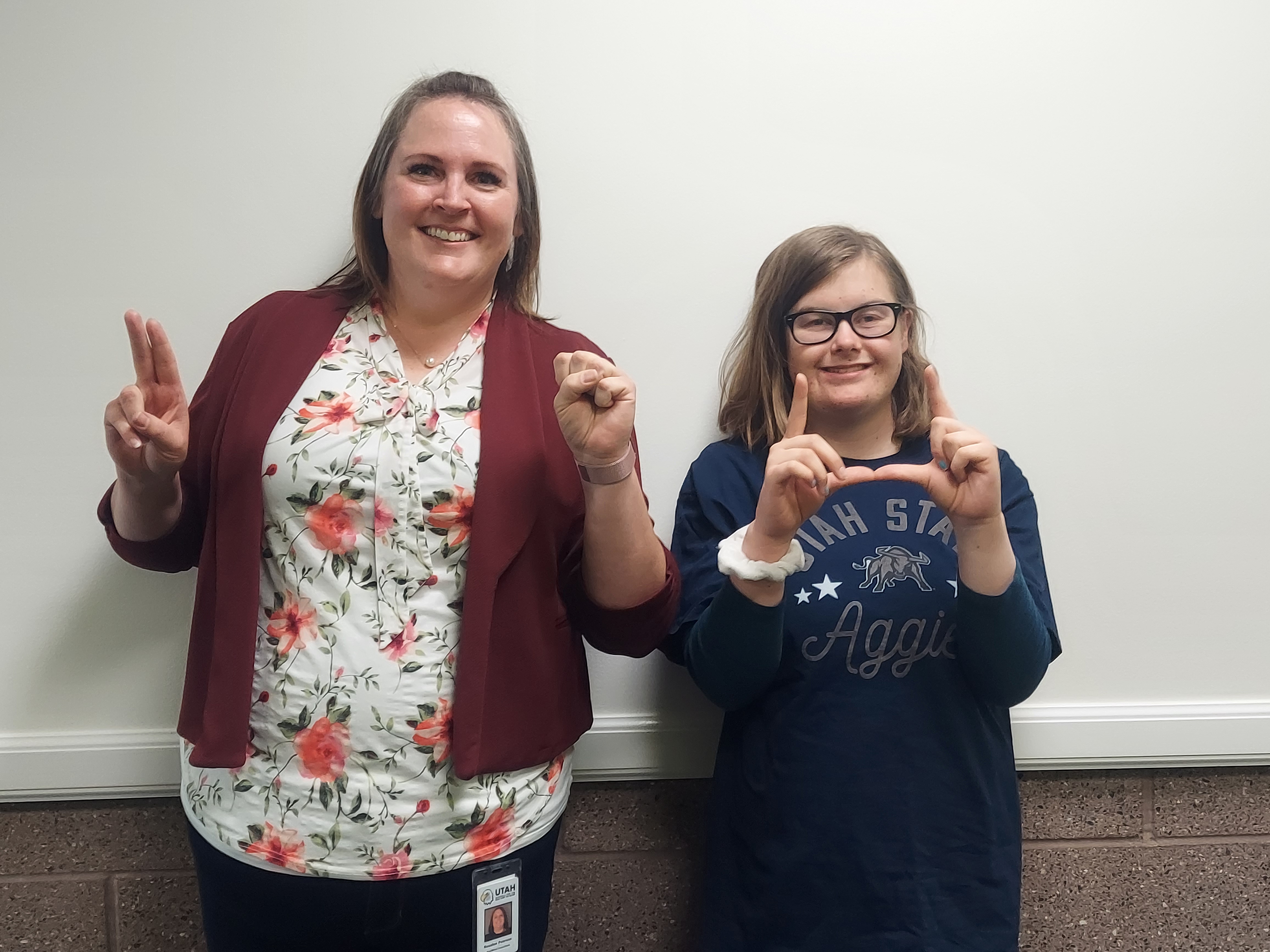
Celebrate your student’s little accomplishments because they will add up and become big accomplishments.
Gretel Sampson
Published June 2023
What began as a short stint to cover for a teacher on maternity leave led to a 22-year career (and counting) working with children who are deaf-blind. Although Gretel Sampson had a degree in special education, she had no experience in deaf-blindness when she got the temporary job at Utah Schools for the Deaf and the Blind (USDB). Nevertheless, she dove right in, immersing herself in “all things deaf-blind,” she recalls.
Several months later, her temporary job turned into a long-term position and a fulfilling career. Along the way, Gretel has taken advantage of numerous professional development opportunities offered by USDB and nearby colleges, and even received her initial training from Jan van Dijk, a world-renowned expert in deafblindness.
Today, Gretel is the project coordinator for the Utah Deaf-Blind Project and a teacher of the deaf-blind for USDB. She says her most significant work occurred in 2012 when she participated on the deaf-blind project’s advisory committee to develop the first ever endorsement in deaf-blindness, now offered by the University of Utah and Utah State University.
Gretel says that an experience that began 16 years ago with two boys with Usher syndrome led to her most cherished working relationship. “I was honored to work with them and their amazing mom from kindergarten until graduation from high school,” she explains. “We all learned so much during those many years about what was the best placement and communication approach. And we worked with interpreters, interveners, and other team members over the years to find the best fit.”
The boys graduated a few years ago and are now employed and doing well. “It was so rewarding to see their entire school career unfold and what they were both able to accomplish,” she says. “This experience and many others taught me that the students and their families are the real heroes. I am in awe of what they are able to accomplish!”
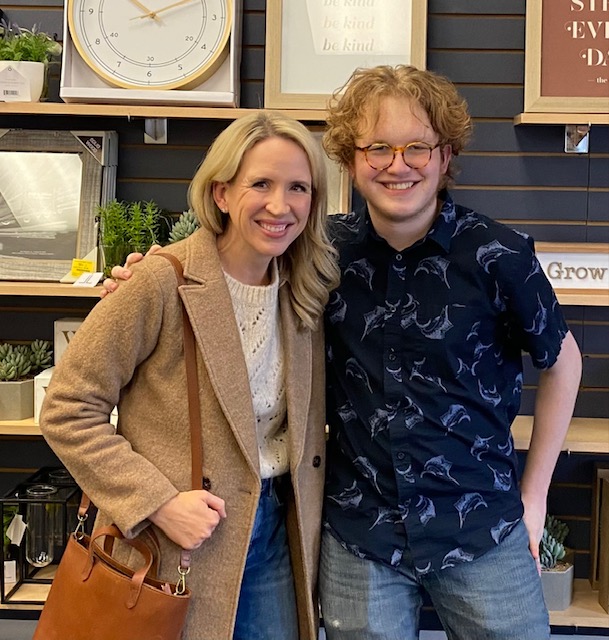
This is a challenging but rewarding field that will make you laugh, smile, and sometimes cry. But it is so worth it!
Mary Alice Dredge
Published April 2023
Right out of high school, Mary Alice Dredge took a job working for the Utah Schools for the Deaf and the Blind (USDB). She first worked with residential students on campus and then as a teacher consultant for the visually impaired. While finishing her bachelor’s degree in special education, Mary Alice served as a Parent Infant Program specialist for the visually impaired.
After taking time off to raise four children of her own, Mary Alice returned to USDB where she is now a teacher of the deaf-blind, intervener training coordinator, and project data analyst. She gathers the state’s information for the National Deaf-Blind Child Count and oversees a technical assistance tracking system for project staff. She also leads the USDB training team that plans, executes, and evaluates their intervener training program, and she developed and maintains their intervener training site.
Mary Alice is currently part of a team working with a preschool class for students with significant disabilities at the USDB Ogden Campus. She meets regularly with team members and related service providers to introduce them to best practices for working with students who are deaf-blind. One student in the class has no usable vision or hearing, and Mary Alice notes that the first few months she did not want to be touched, especially her hands. They were able to hire an intervener to provide consistent one-to-one support, she says, and “the student is beginning to search for others around her and allowing some hand-under-hand tactile exploration.”
The experience characterizes what Mary Alice says is her best advice: “We need to observe a child who is deaf-blind carefully and follow their lead. Let them know you are available, and they will invite you in when they are ready.”
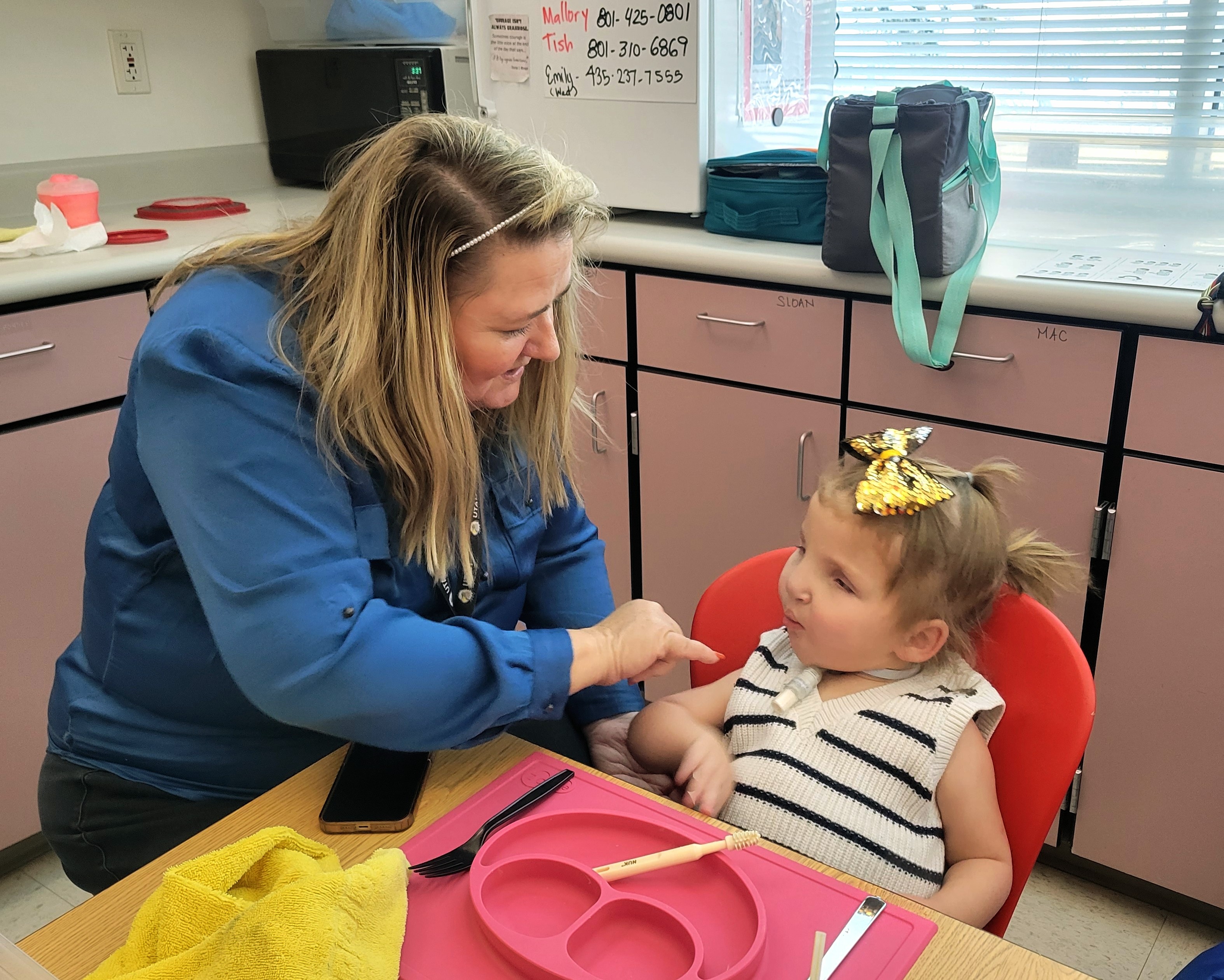
I feel so grateful everyday for the opportunity to work in the field of deaf-blindness. Each child is unique and wonderfully challenging. I know that I am a more loving, patient, and creative individual because of the work I do, and I hope that I am also making a small difference in the access they have to the people and things in their world that bring them joy!
Kirsten Corbett
Published April 2023
Kirsten Corbett recalls she knew next to nothing about the job of an intervener when she applied to be one while an undergraduate at the University of Utah. She got the job and worked with three students while finishing her bachelor’s in speech and hearing science. “Each student was so different! I really enjoyed getting to know them and learning how to work differently with each one.”
Since those early days, Kirsten completed intervener training through the SKI-HI Institute at Utah State University. She also received a master’s in education, with endorsements in deaf-blind education and deaf and hard of hearing (birth-5) from the University of Utah. Kirsten adds that much of what she’s learned over the years has come from 24 years of working in the field with students, educational teams, and colleagues.
Today, Kirsten is a teacher of the deaf-blind at the Utah Schools for the Deaf and the Blind (USDB), serving in a number of charter schools and districts throughout the state. She recalls that teaching during Covid was incredibly challenging, but it showed the impact collaborative educational teams and technology can have on student success.
For example, she worked on a team that included an intervener, a special education teacher, and the parent of a child with complex healthcare needs. They designed daily online lessons that involved tactual exploration as well as communication switches, which the student learned to use to participate in activities and communicate. “How grateful we all were that there was the technology that allowed her to continue to be educated and stay healthy,” Kirsten says.
More recently, Kirsten is working on USDB’s transition team to help students transition to adult services, spreading the word to parents and teams about services that are available from the different agencies. “Our hope is to give students a number of opportunities once they leave the education system,” she says.
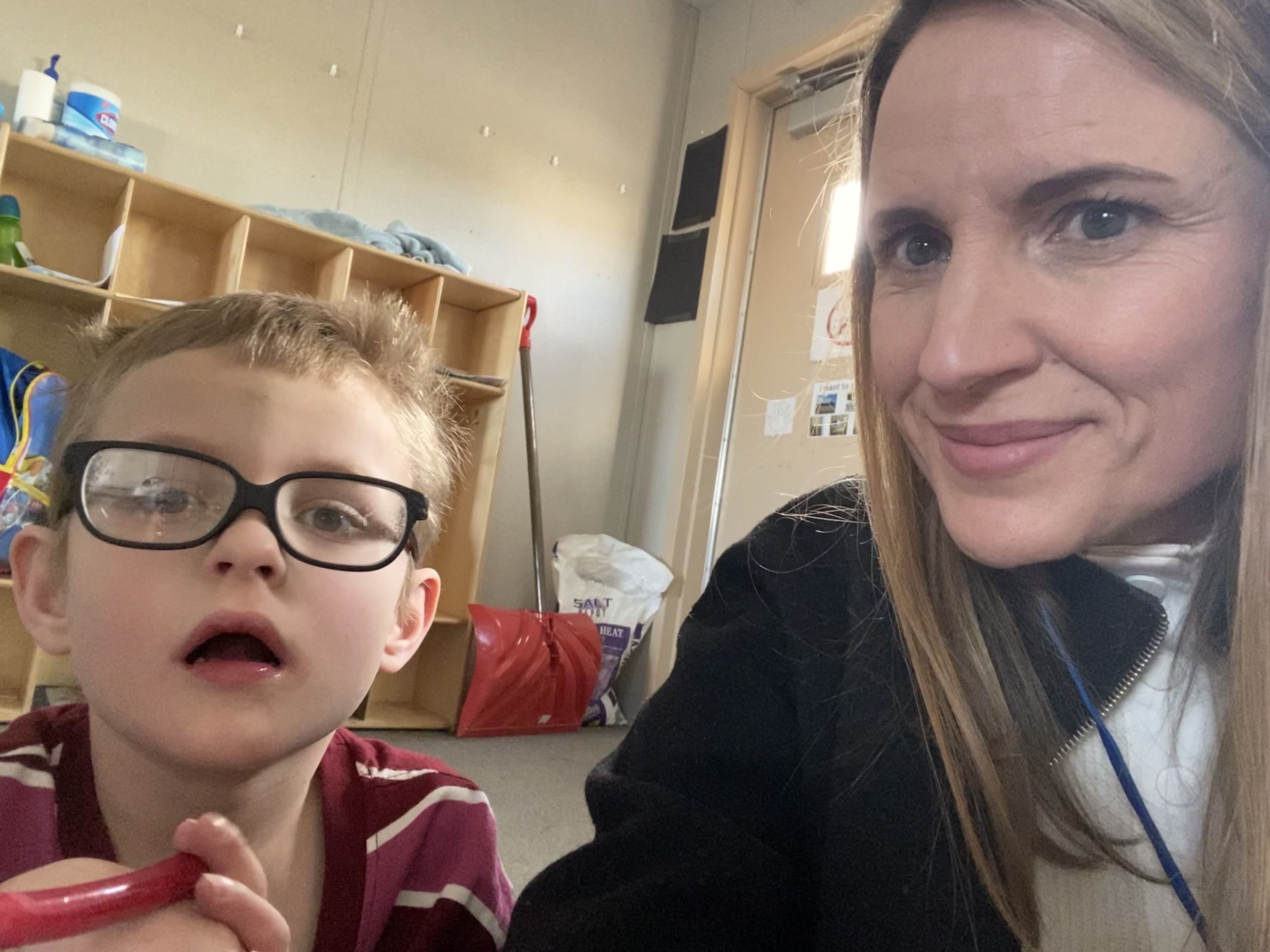
It’s easy to focus on helping students who are deaf-blind get an education, but sometimes we forget that they are children, teens, or young adults who have likes and dislikes, have different emotions on different days, and may have additional health issues. Get to know your students and their personalities—they are all so unique!
Debbie Sanders
Published January 2023
Debbie Sanders was working as a paraeducator in a special education classroom when an opening came up in the class next door for an intervener to work with a student who was deaf-blind. She applied, got the job, and “from that point on,” she says, “working in deaf-blindness became my career.”
And she’s had a busy one. Over the years, Debbie has been a family engagement coordinator, a deafblind consultant, and a national Helen Keller Fellow. She’s also been an active contributor to and participant in a number of projects with NCDB, NICE, and the CEC, and helped develop a virtual deaf-blind institute in Utah for teachers, related service providers, and others who work with students who are deaf-blind.
Debbie had been working on a master’s degree in visual impairments from the University of Utah when their new endorsement in deaf-blindness became available. The timing, she says, was perfect. She was able to graduate with a dual endorsement in teacher of the deaf-blind and teacher of the visually impaired. Today, Debbie works as a TDB and project specialist for the Utah Deaf-Blind Project.
The mother of one of Debbie's students had wanted to have a deaf-blind simulation for her family for a long time, but scheduling a time to get the extended family together was proving difficult. Debbie suggested using the student’s annual birthday party as a time to do the simulation. Three other TDBs, their family engagement coordinator, and the student, with the help of her intervener, collaborated with Debbie to create the event. Traditional birthday party games were turned into deaf-blind simulation experiences and discussions.
The birthday party simulation was a great success! Not only did extended family members have the opportunity to celebrate the student’s birthday, but several family members mentioned they also gained an understanding of how to engage and interact more fully with her.
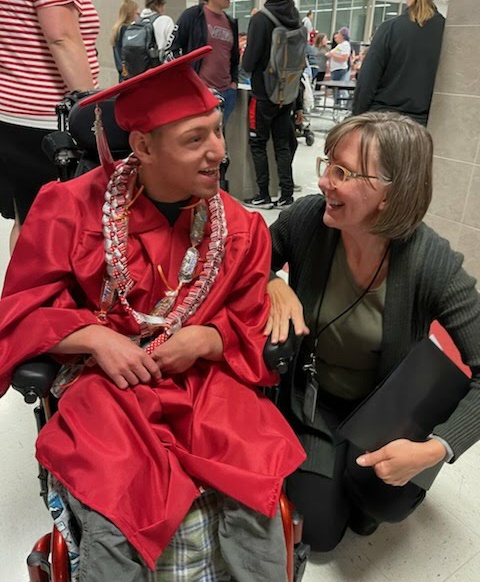
Each student with deaf-blindness has unique talents and abilities to share. They have something amazing and wonderful to offer, if we will only take the time to get to know them and recognize their strengths. That means we have to enter their world rather than always requiring them to enter ours.
Kristina Buck
Published January 2023
Kristina Buck’s career began when a friend asked if she was interested in his job as an intervener. She jumped at the chance and loved it. After taking a number of years off to raise a family, Kristina re-entered the job market as a paraeducator in a special needs classroom, and to her surprise, a preschooler who was deaf-blind enrolled and needed an intervener.
“I was thrilled for this opportunity to use my skills and knowledge again as an intervener,” she says. “I think it’s not a coincidence that deaf-blindness found me twice! Working with children who are deaf-blind was the purpose in my life I was looking for.”
When the NICE (National Intervener Certification E-Portfolio) program was being developed, Kristina was selected as one of eight individuals to participate on a team examining the effectiveness and usability of the new system, which now provides training, support, and national recognition for interveners. A few years later, she began work on a master's in special education from the University of Utah, receiving teacher of the visually impaired and teacher of the deaf-blind endorsements.
Kristina now works as a teacher of the deaf-blind and teacher of the visually impaired for Utah Schools for the Deaf and the Blind, serving children in southern Utah. She also leads their Deaf-Blind Expanded Core Curriculum team and is a member of the NCDB Training Intervener Group and the Utah Deaf-Blind CHARGE team.
Last year, Kristina collaborated with a teacher of the visually impaired and an orientation and mobility specialist to create the Short Term Activity Expanded Core Curriculum Group in Utah’s St. George area. For one activity, they took students with visual impairments and students who are deaf-blind to a beauty salon. There, they were given explicit directions on using their tactile skills to wash, rinse, and style their hair. “At the end of the activity,” she says, “they all felt confident and had the self-determination to independently wash and style their hair. I loved seeing all the big smiles beaming on their faces.”
Kristina says that being endorsed as a teacher of the deaf-blind has meant the world to her. “I am so grateful for the knowledge that I have learned and the opportunity to share it with my teams and others,” she explains. “I learn more from my students than I ever can teach them. My students are my heroes!”
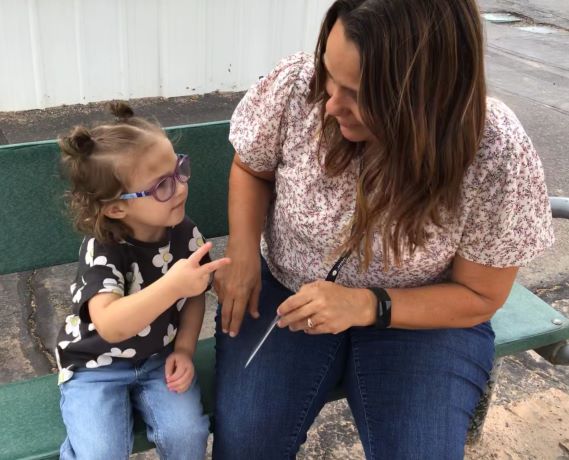
Every student has great potential to learn and succeed! Use their strengths and be creative in finding ways to help them learn. Never underestimate your student's ability to compensate for their dual sensory loss.
Sundie Marx
Published November 2022
Sundie Marx began working as an intervener while attending college. After graduation, she knew without a doubt that she wanted to continue her education to learn how to better support children with deaf-blindness and their families.
Sundie went on to receive a master’s in developmental psychology from the University of Pittsburgh, and endorsements in teacher of the deaf-blind and early childhood educator from the University of Utah. She says her best training has been from directly working with children and their families.
For more than 15 years, Sundie has been with Deaf-Blind Services at Utah Schools for the Deaf and the Blind (USDB), now serving as a teacher of the deaf-blind and early interventionist with their Early Intervention and Early Childhood teams throughout Utah. She also is a member of the USDB Advisory Council. In addition to her job at USDB, Sundie is working with the National Center on Deaf-Blindness to create a professional development training module on early intervention.
Sundie believes that an important part of her job is coaching caregivers to develop the skills and confidence needed to be the best parent they can be for their child. “This will transfer directly to their child,” she adds, “improving their skills and confidence.”
“I recently had a mom tell me that, because of the skills she’d learned, she finally feels like her daughter’s mom rather than her nurse or therapist,” explains Sundie. “It’s rewarding to know she now has a connection and bond with her daughter and not just that of a full-time caregiver.”
To Sundie, becoming a teacher of the deaf-blind and receiving the deaf-blind endorsement was exceptionally meaningful: “It means that children who are deaf-blind and their families are being represented and recognized as a group of individuals who deserve well-trained educators to help them better access their education.”
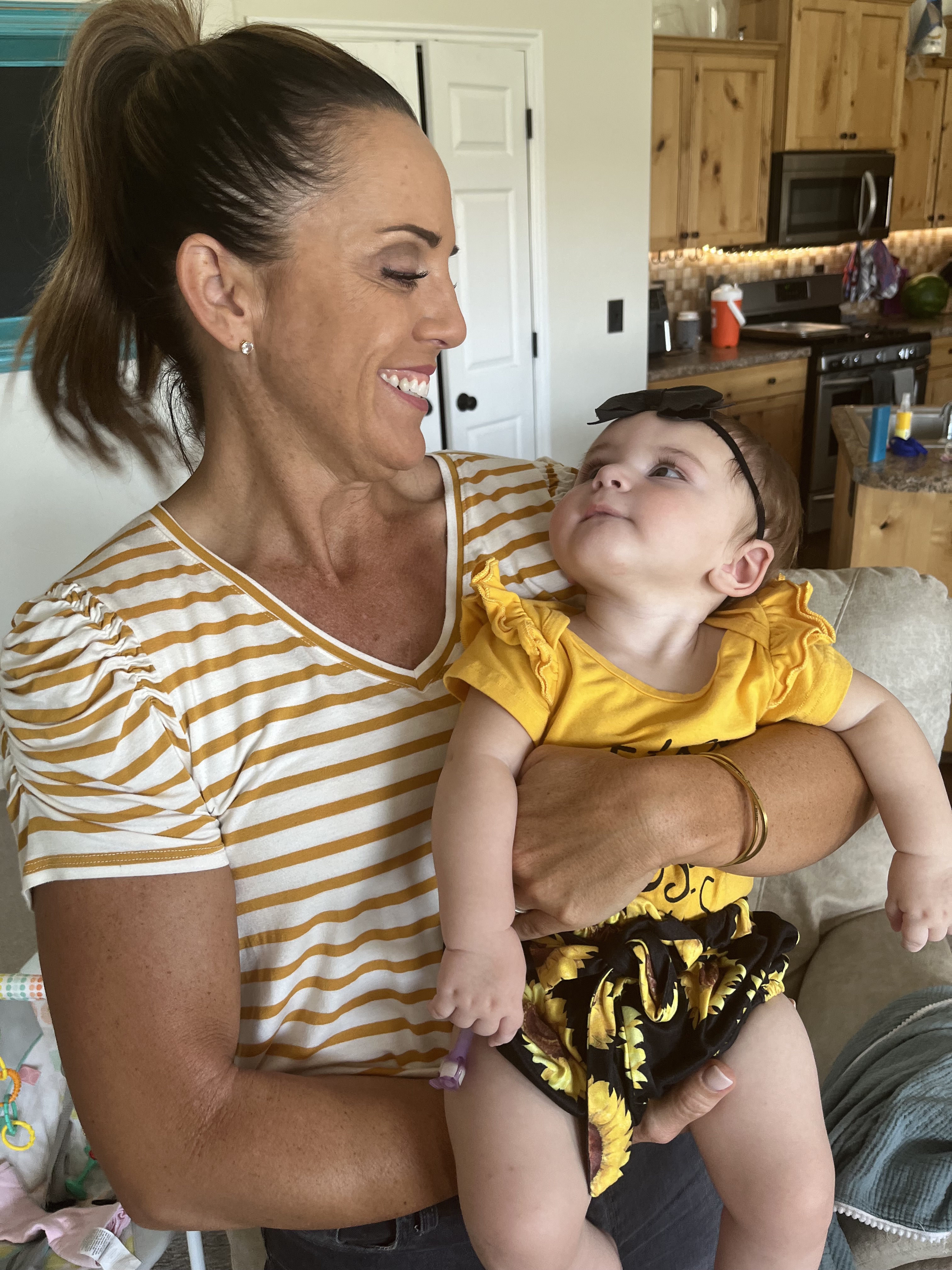
You will learn a lot more from caregivers of children who are deaf-blind than you will from your own agendas or lesson plans, so follow their lead!
Tricia Broadhead
Published November 2022
While on her first job as a classroom paraprofessional in 1997, Tricia Broadhead met a student with deaf-blindness. She applied for and became that student’s intervener, working with her while she completed a degree from Utah State University in special education with a severe/profound endorsement. In 2000, she became a deaf-blind teacher specialist with Utah Schools for the Deaf and the Blind (USDB) and has worked for them ever since.
To broaden her understanding, Tricia went on co-visits with other deaf-blind specialists and took additional university courses in deaf-blindness, vision loss, and orientation and mobility. Likewise, USDB brought in many of the top leaders in deaf-blindness to share their expertise.
Tricia initially worked with a full caseload of students for four years before switching to orientation and training for new interveners in the state. Today, she works with students and serves on the Utah state deaf-blind project’s training team, which provides full project training and orientation for every intervener hired.
Tricia loves collaborating with her teammates and hearing their different perspectives. “I still learn something new every time I am taught by one of the knowledgeable people on our team,” she says. “We work together to figure out difficult situations and roadblocks we’re facing. And it’s truly amazing when I see a student be successful with something that I helped implement.”
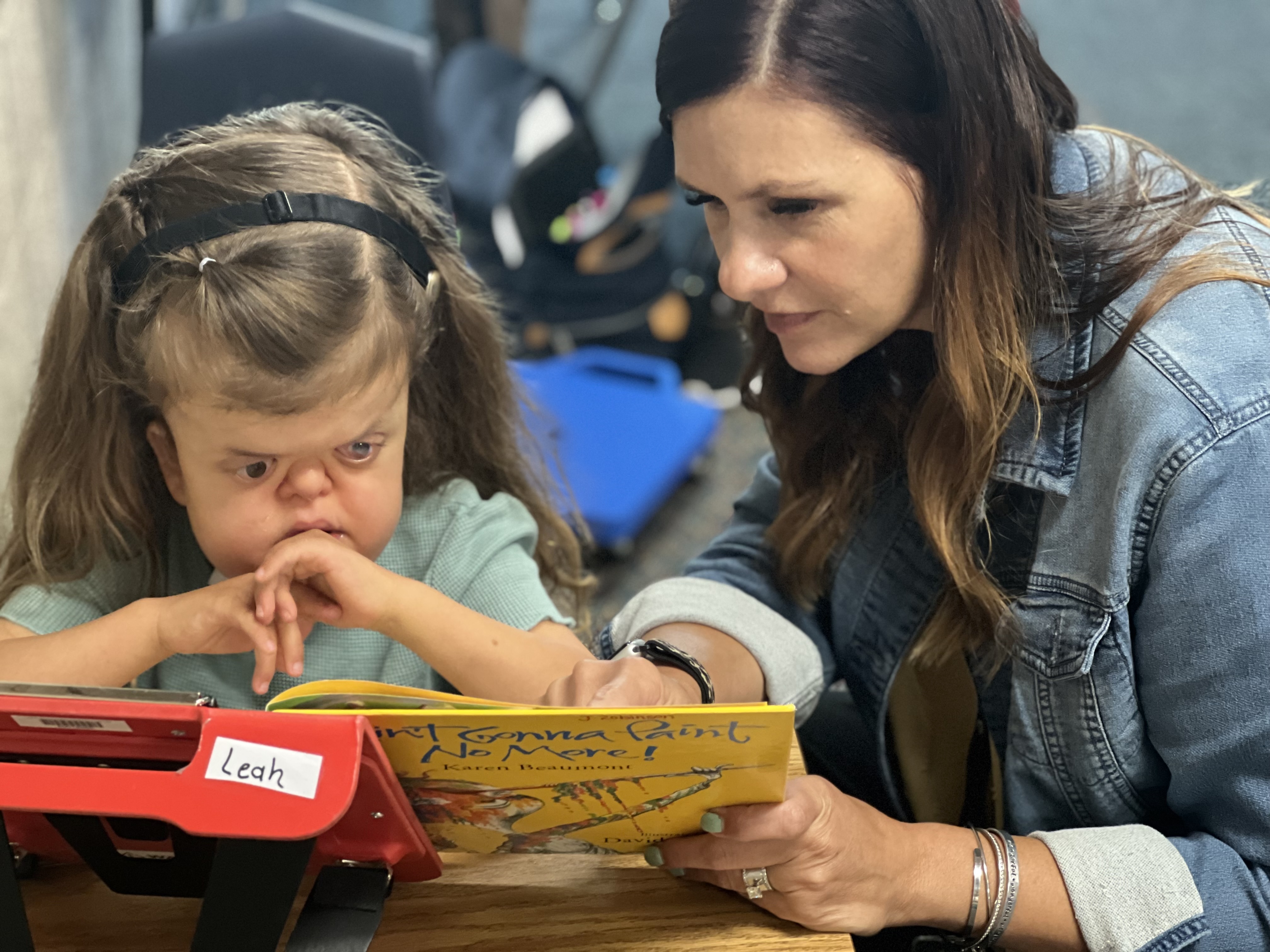
I love the saying, “Success doesn’t come from what you do occasionally, it comes from what you do consistently.” It’s so applicable to working with students who are deaf-blind. We have to be consistent and always celebrate the small accomplishments!
Denise Pearson
Published September 2022
Early in her career as a special education teacher, Denise Pearson was told she would have a student who was deaf-blind. Her first reaction was, “How can I teach a student who can’t see or hear?” Fortunately, the student had an intervener and many effective strategies were already in place. “I learned so much during the three years I was this student’s teacher,” she explains. “And I was able to use those skills and strategies to help my other students who had sensory loss.”
Denise says she learned first-hand that many special educators are unfamiliar with resources available for students who have combined vision and hearing loss. “I felt that I could do more to help,” she says. Denise went on to receive an endorsement in deaf-blindness and is now a teacher of the deaf-blind for the Utah Schools for the Deaf and the Blind. She also serves on their intervener training and intervener recruitment teams, and leads their CHARGE syndrome task force.
Denise credits the education she received while working on the endorsement with making her more skilled at providing her students with increased access to their environments, peers, teachers, and curricula.
Last year Denise provided consultation to the team of a student who was becoming less responsive to others. She worked with them to help increase her wakefulness and responsiveness at school. After a few months, the student started to become a bit more responsive. “During one of my visits,” Denise said, “I put my hands in hers and squeezed. She started squeezing back! Then I squeezed a simple pattern, and she squeezed the pattern back. We were so happy to see that she was responding.”
Denise advises those new to working with a student who is deaf-blind start by understanding the student’s unique vision and hearing needs and their preferred sensory modes. “Then, be creative in making things accessible to this student based on their available sensory modes and preferences,” she says.
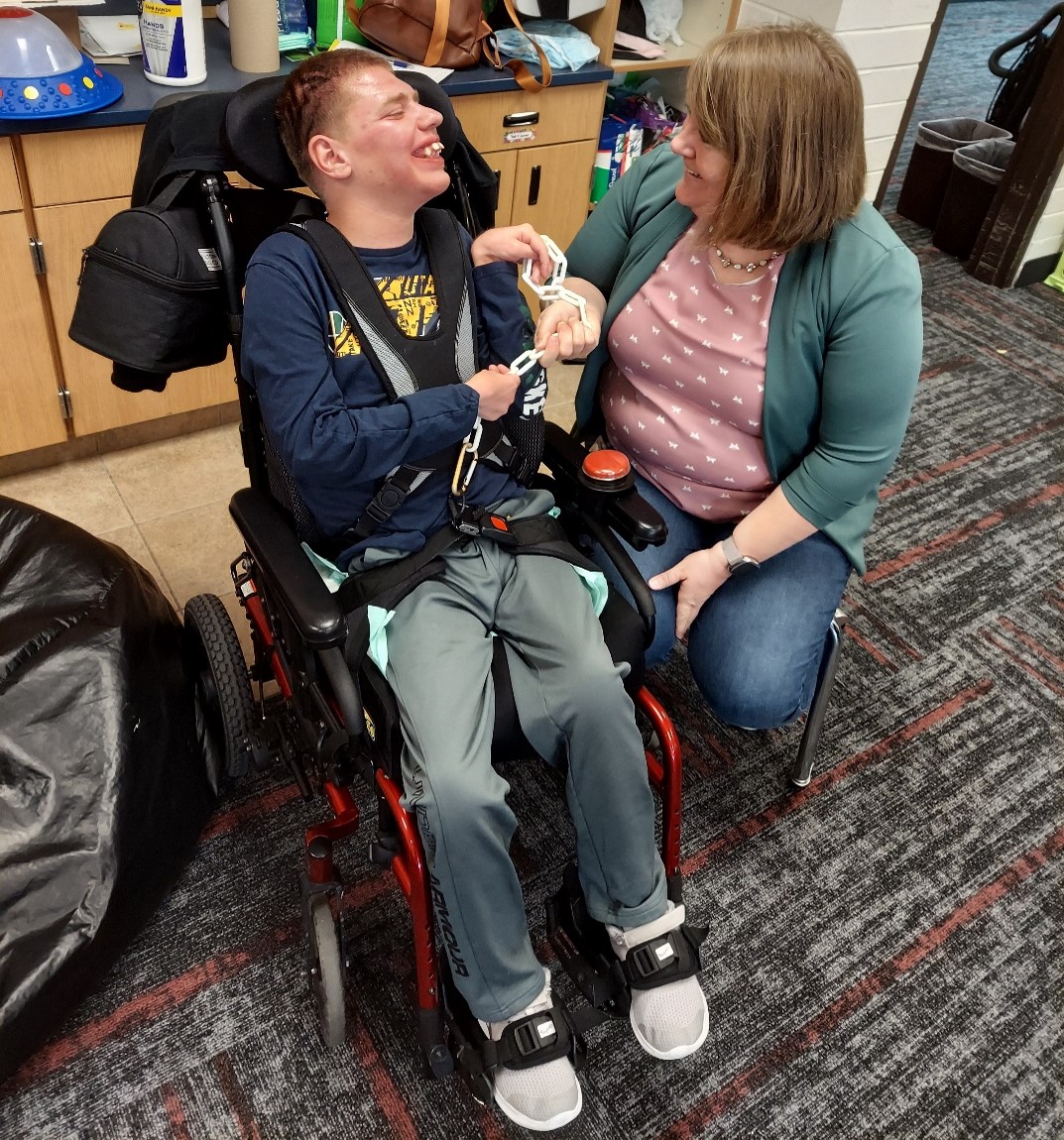
Don’t hesitate to reach out to others who have experience working with students with deaf-blindness. Teachers of the deaf-blind are available and excited to help and answer any questions!
Leslie Buchanan
Published September 2022
Participating in a workshop with Jan van Dijk and Cathy Nelson, leading scholars in working with children who are deaf-blind, crystalized Leslie Buchanan’s professional aspirations. At the time, she’d been working part-time as an intervener, and the workshop experience convinced her to pursue a career in deaf-blindness.
Leslie obtained a master’s in special education and took advantage of numerous professional development opportunities and conferences, many of which included national and international leaders in the field of deaf-blindness. She also received endorsements in severe disabilities, visual impairment, and administration.
In more recent years, Leslie partnered with the University of Utah, Utah State University, and the Utah State Board of Education to develop the teacher of the deaf-blind endorsement and its required coursework. The endorsement was a major accomplishment, signaling a new acknowledgment and respect for those with expertise in deaf-blindness. Leslie herself received the endorsement.
Leslie currently is a lead teacher for the deaf-blind, overseeing Utah’s Deaf-Blind Services provided through Utah Schools for the Deaf and the Blind and the Utah Deaf-Blind Project. For the past two years, she’s worked with others at Utah’s Deaf-Blind Services to develop expanded core curriculum materials specific for deaf-blindness.
Although she helps with some administrative tasks, Leslie loves her work in the classroom. Recently, she collaborated with a classroom teacher, a teacher of the visually impaired, and a district technology specialist to develop a calendar system specific for a student’s needs. She says, “It’s been so gratifying to see the student developing an understanding of time concepts and the routines of her day while using this new system.”
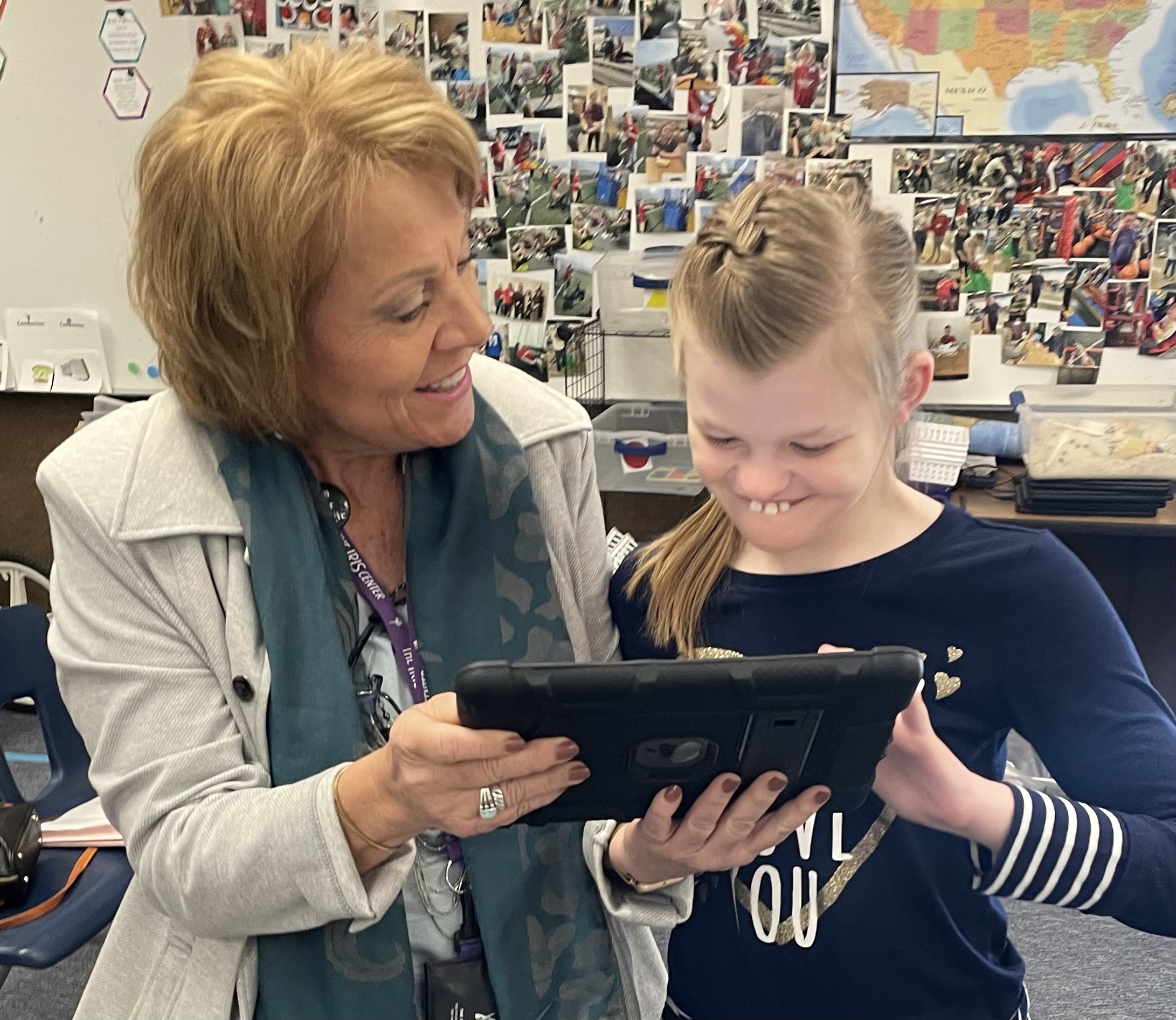
Children and youth who are deaf-blind are children and youth first. As such, it’s important to learn about their unique strengths and needs and develop reciprocal relationships with them.
Brooke Barnhill
Published July 2022
Brooke Barnhill is a teacher of the deaf-blind and a transition specialist for the Utah Deaf-Blind Project and Utah Schools for the Deaf and the Blind. She loves the work, which allows her to use her passion for working with children who have significant support needs, their families, and educational teams. But what she looks forward to most, she says, “is when I can work directly with the students who are deaf-blind and join their world for a little while.”
Brooke earned a master’s in Special Education from Boston College and did her student teaching at Perkins School for the Blind in their Deafblind Program. Although she has endorsements in multiple disabilities, deafness/hard of hearing, and vision loss, she recently completed a Master of Philosophy in Special Education from the University of Utah, with an endorsement in deaf-blindness. Brooke says that this was a significant event in her career. “It’s been fulfilling to finally receive an endorsement in my specialty and to be called and recognized as a Teacher of the Deaf-Blind.”
This school year, she began working with a young woman who is deaf-blind and has significant support needs. Brooke collaborates with her classroom teacher, intervener, and teacher of the visually impaired to establish a trusting relationship, discover motivating activities, and reduce self-harming behaviors. “We worked to come up with a schedule that focused on motivating activities and consistent responses to her communication,” she explains.
The team’s hard work is already seeing positive results: “The student has blossomed this year!” Brooke says. “Her self-harm behaviors have significantly reduced, she has moved up a level on the Communication Matrix, and the team has raised their expectations for her life after high school.”
Brooke urges educators to increase their awareness of deaf-blindness and learn the best practices for working with those who are deaf-blind. She says, “These efforts lead to improved access to the learning environment and improve students’ anticipation and participation in their learning.”
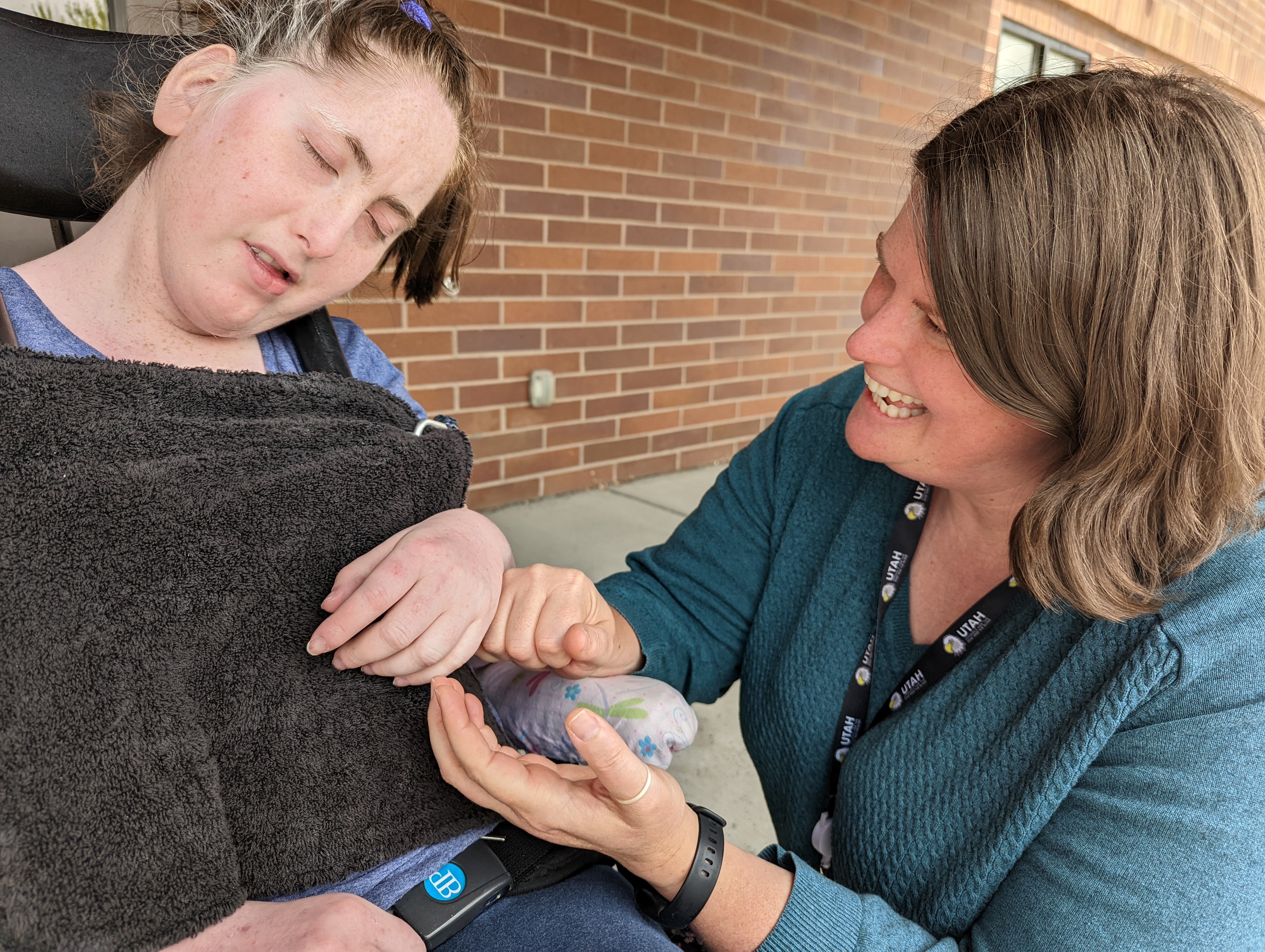
Be curious. Working with individuals who are deaf-blind, you have an amazing opportunity to learn alongside them and to experience the world in a whole new way.
Lara Leigh Whitney
Published July 2022
Lara Leigh Whitney’s work in deaf-blindness began with a keen interest at a young age in ASL. She became an ASL interpreter and accepted a position with the Utah Schools for the Deaf and the Blind (USDB) as an intervener, working with a student who was deaf-blind and used ASL.
Lara Leigh says that experience started her on a path to becoming a teacher of the deaf-blind. She pursued a bachelor's in special education, with an emphasis on severe disabilities, and then a master’s in special education, with a deaf-blind endorsement. She says it was a great honor to be in one of the first cohorts in the field to receive a deaf-blind endorsement.
Following her college years and a teaching position in Alaska, Lara Leigh returned home to USDB–and she’s been with them ever since as a teacher of the deaf-blind. In particular, she says she loves the challenges of communicating in students’ preferred languages as well as “working with students who have some troubling behaviors.”
She says one of her most memorable experiences involved working with a student who participated in the DeafBlind Immersion Experience at the Helen Keller National Center. “We traveled to New York, where he explored employment opportunities, learned about independent living practices, and experienced using public transportation,” she explains. “The student learned so many great lessons about life after school.”
Over the years, Lara Leigh has expanded her knowledge of deaf-blindness by learning Braille and by participating in multiple deaf-blind conferences and professional development programs offered by NCDB, the Western Region Early Intervention Conference, and the Texas School for the Blind and Visually Impaired.
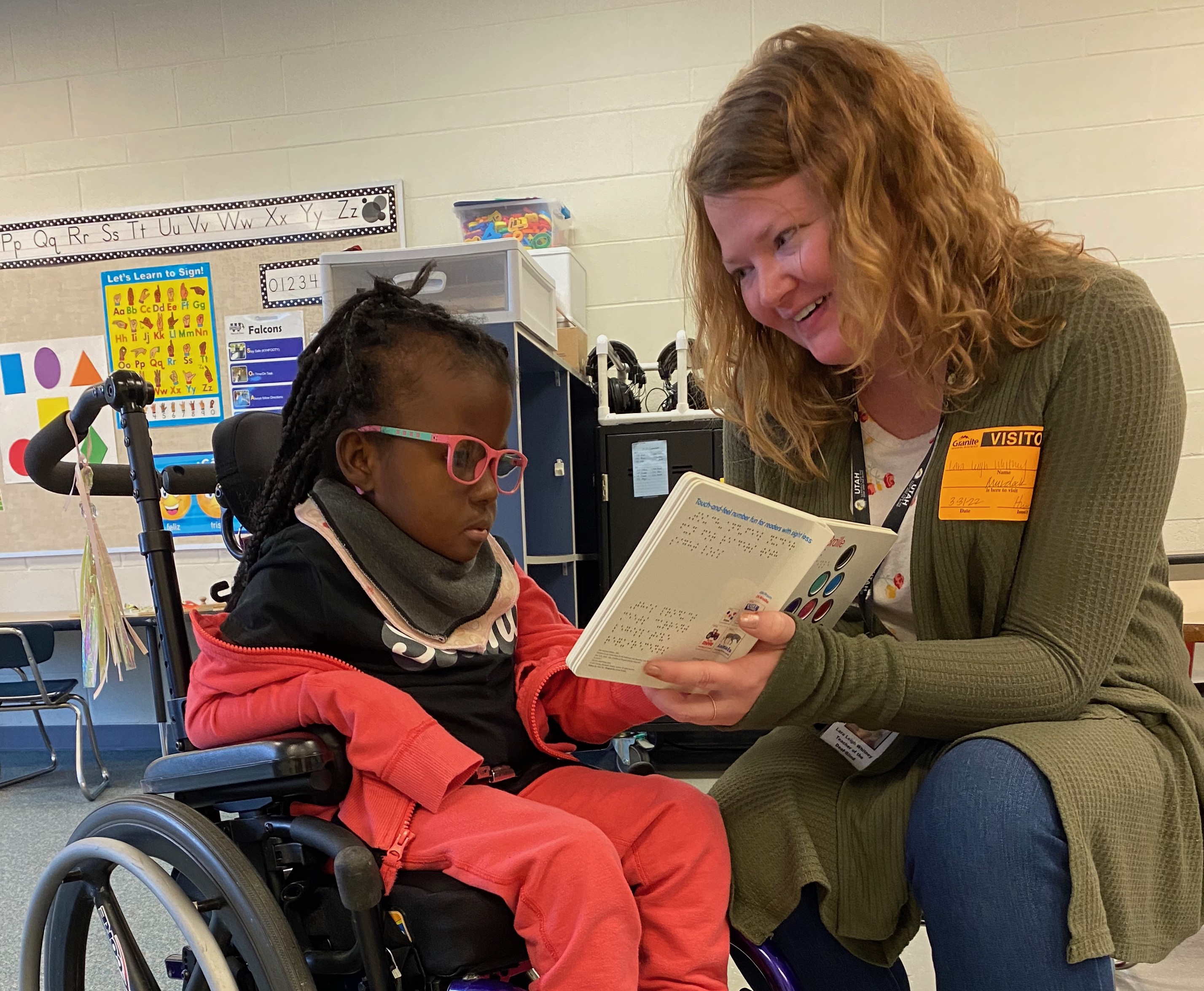
You are always learning and growing as a teacher, with good days and harder days. It’s important to allow the good days to bring you joy and inspiration to keep going. Cherish the milestones your students achieve.
